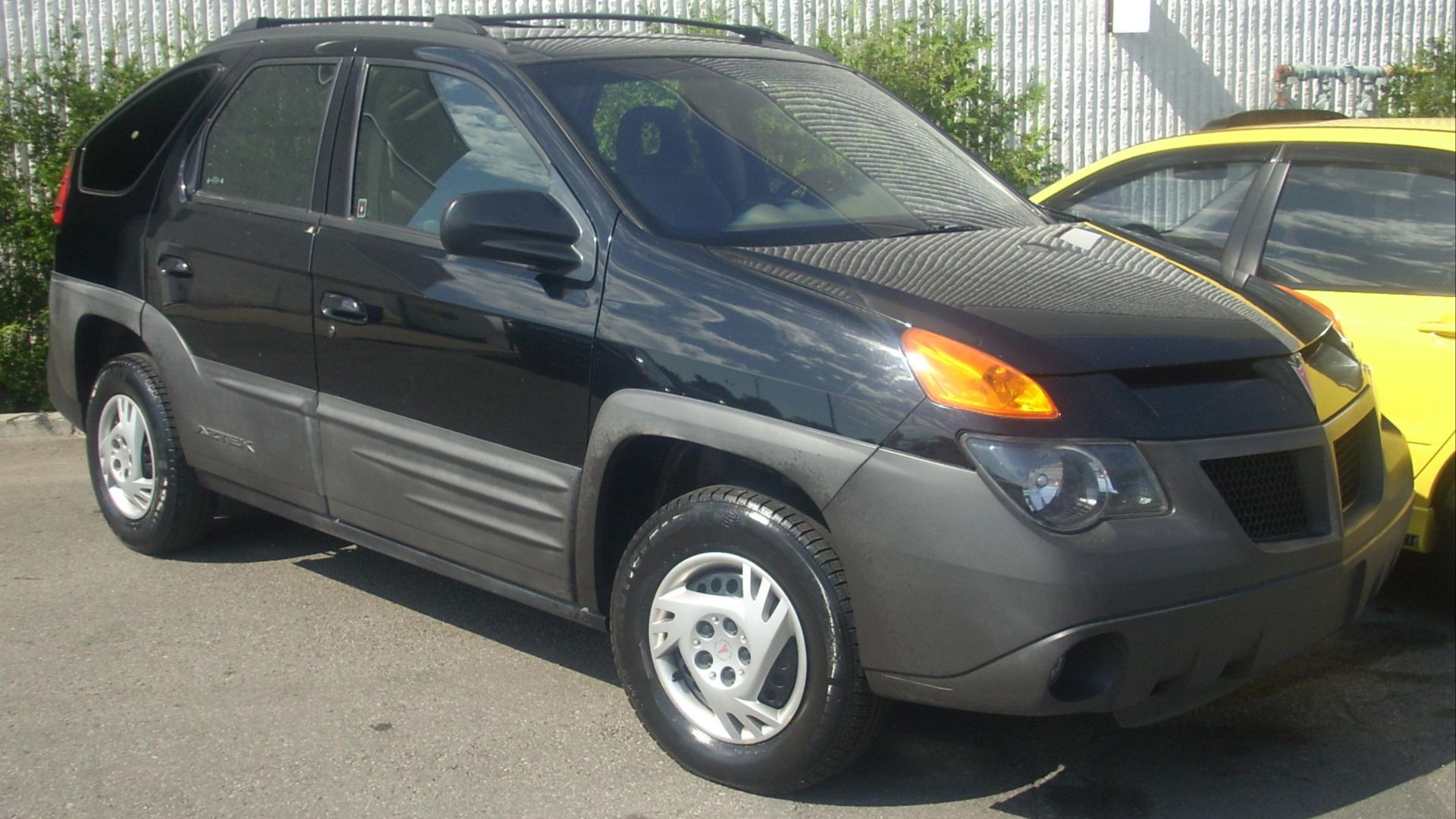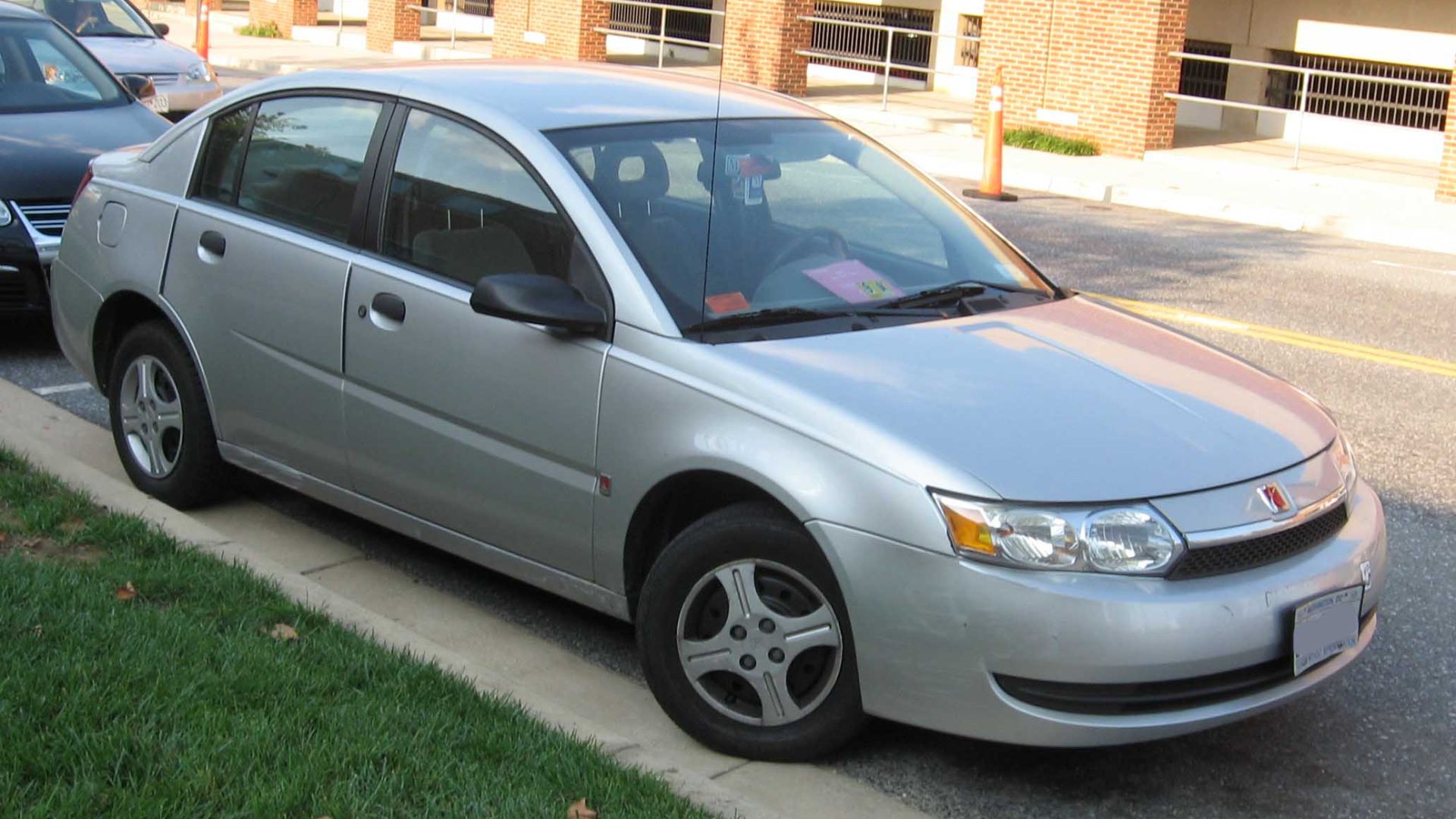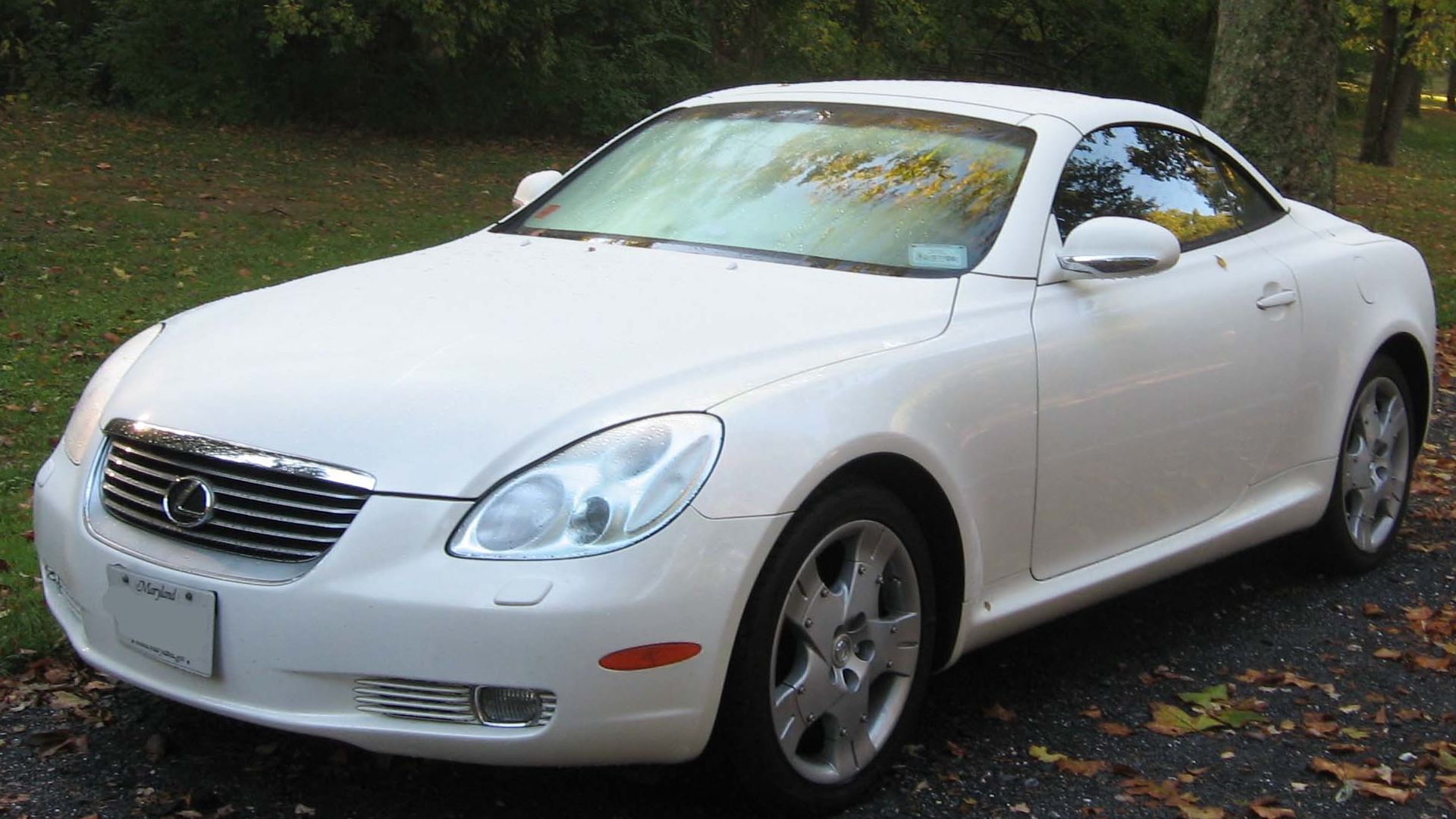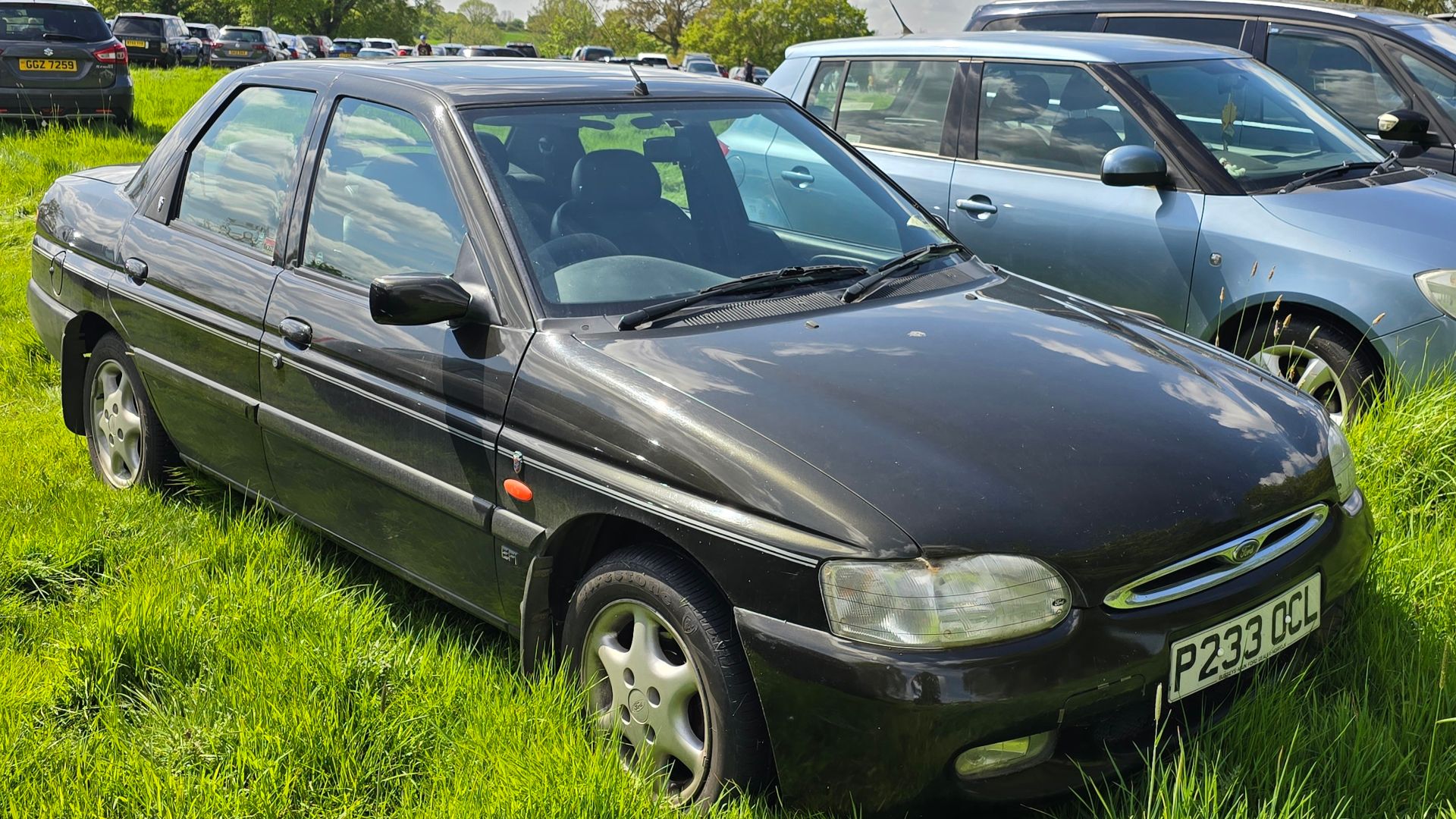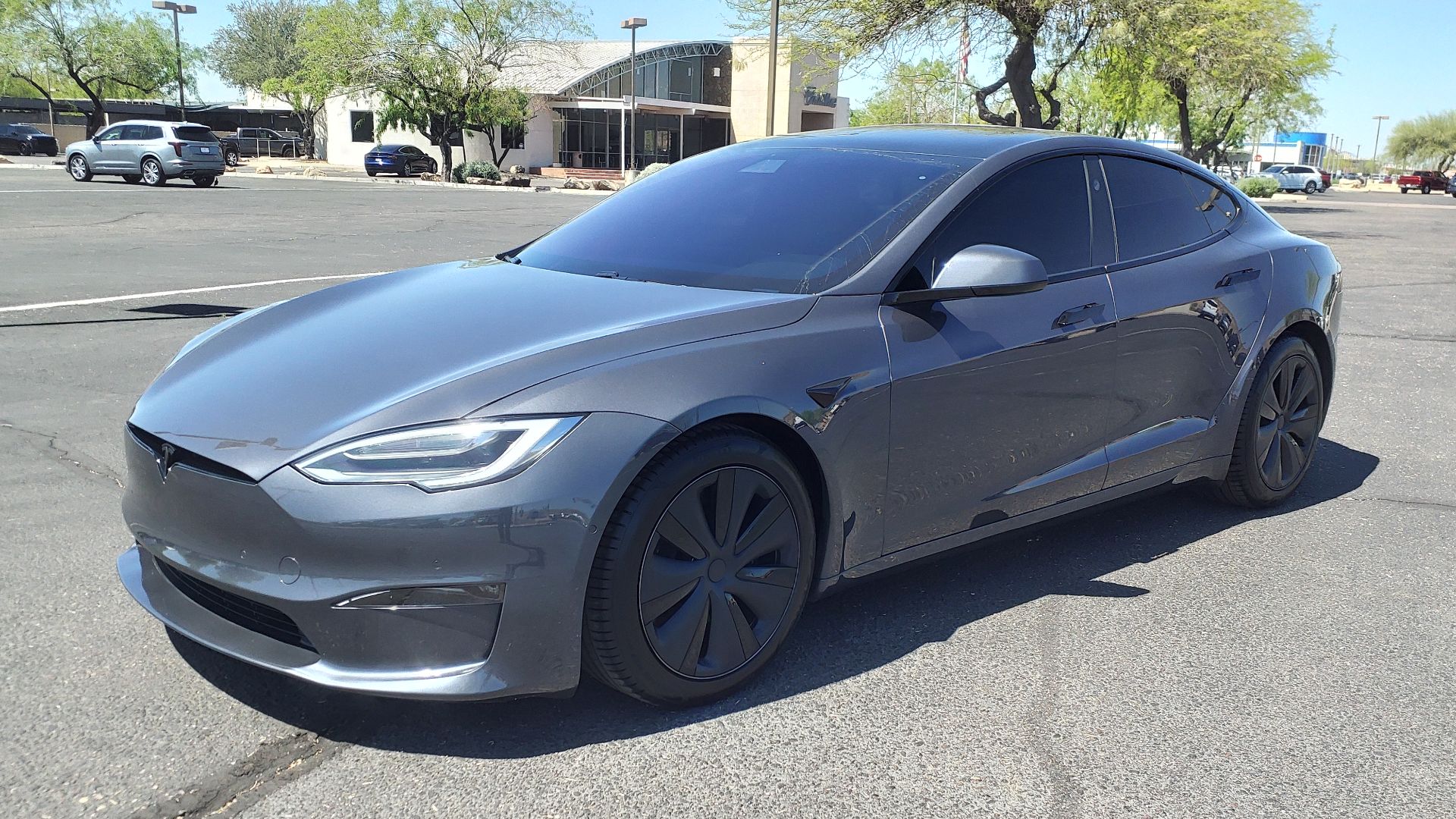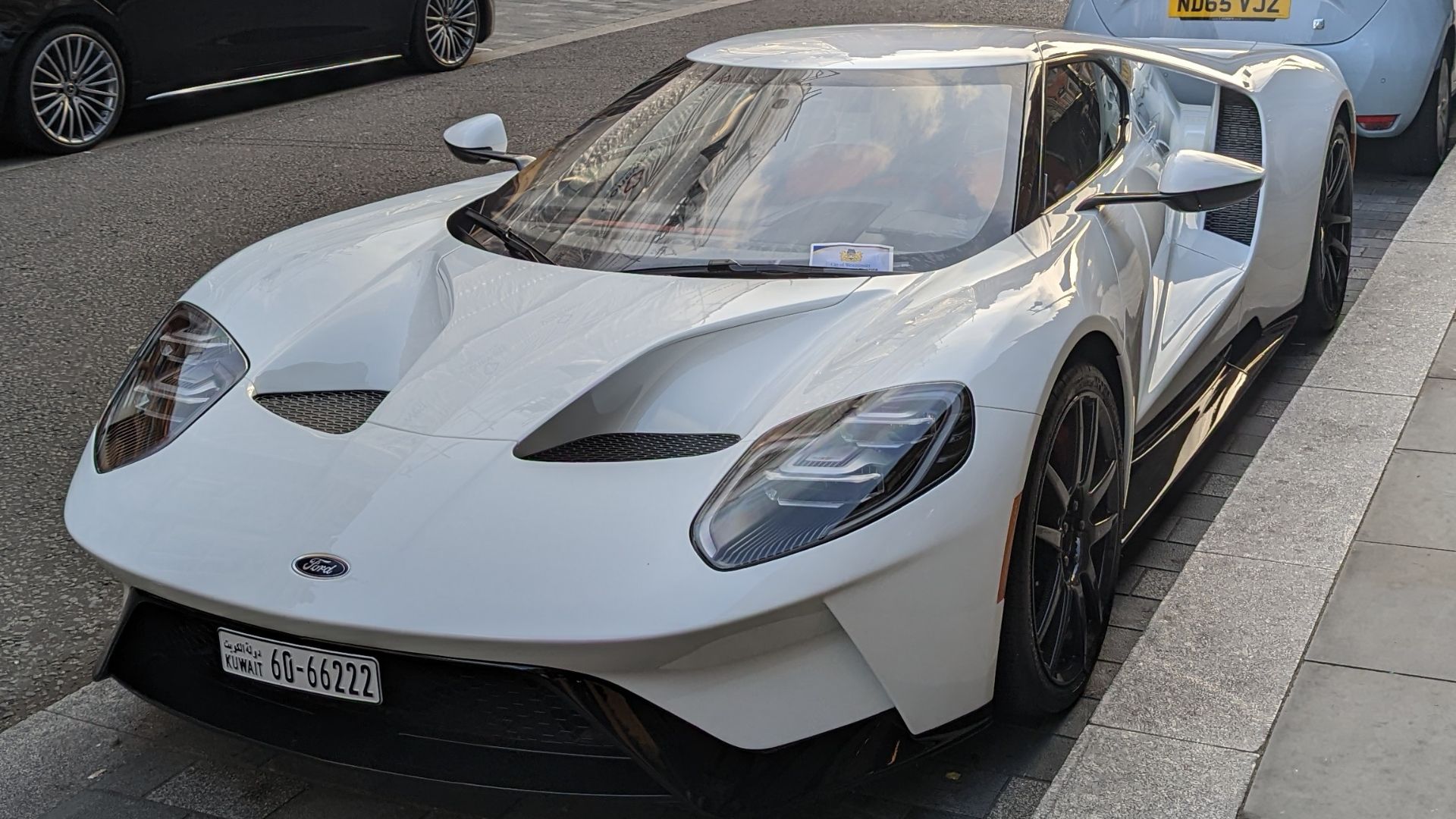Where Automakers Win Or Lose Drivers
It’s easy to overlook the steering wheel, yet it defines every drive. We’ll first explore 13 vehicles whose steering wheels disappointed their drivers. Then, the narrative shifts toward twelve remarkable steering wheel designs that prove some automakers truly cared.

Pontiac Aztek
It wasn't just the body that drew puzzled looks. The Aztek's steering wheel featured a thick, plasticky T-shaped hub that clashed with the dash. Critics slammed its awkward design and poor material quality by calling it a prime example of GM's early-2000s identity crisis.
Toyota Echo (1999–2005)
Toyota aimed for affordability, but the Echo's steering wheel betrayed its budget focus. Reviewers noted its thin, gripless rim and hollow plastic feel. Its off-center driving layout, combined with this uninspired wheel, left drivers feeling disconnected from the road.
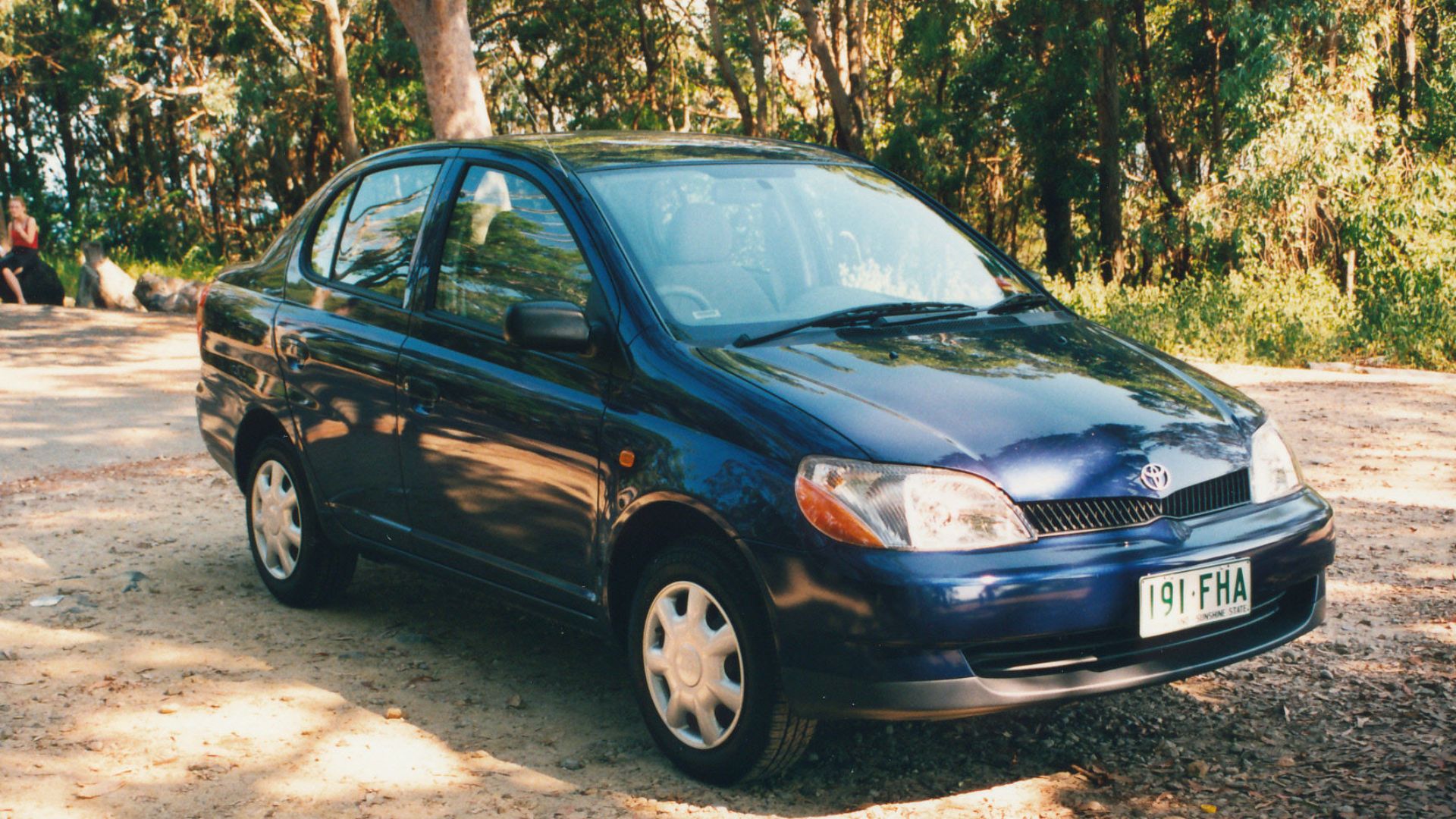 Jeremy from Sydney, Australia, Wikimedia Commons
Jeremy from Sydney, Australia, Wikimedia Commons
Chrysler Sebring (2007–2010)
The Sebring's steering wheel stood out for all the wrong reasons. Its square center limited hand placement, while faux wood trim chipped over time and grew hot in direct sunlight. Despite Chrysler's upscale aims, owners and reviewers regularly flagged the wheel as a glaring design misstep.
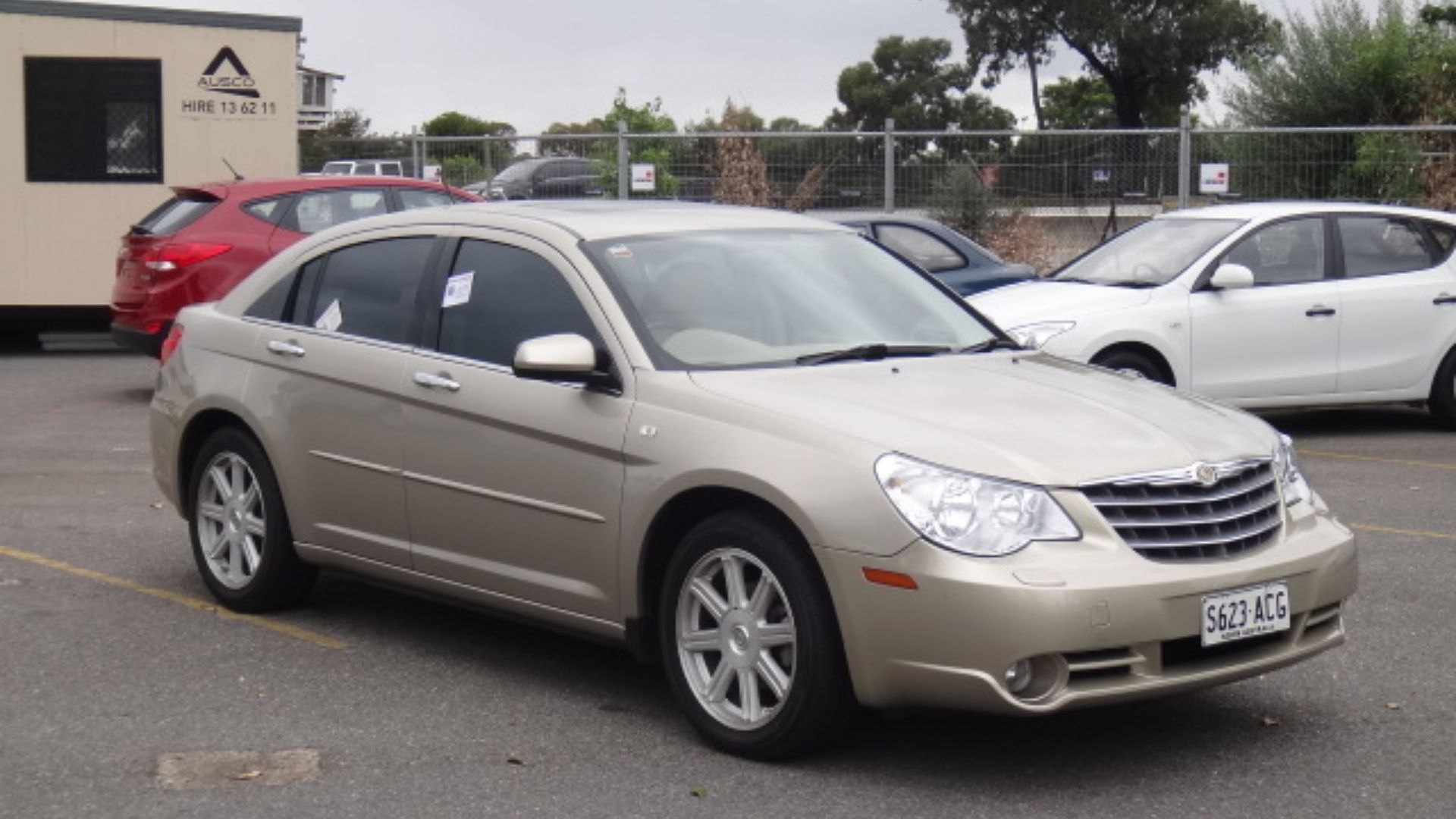 TuRbO_J from Adelaide, Australia, Wikimedia Commons
TuRbO_J from Adelaide, Australia, Wikimedia Commons
First-Gen Nissan Juke (2011–2017)
Daring on the outside but disjointed within. The first-generation Juke's wheel crammed too many buttons into an uneven layout. Night visibility was poor due to unlit controls. Auto critics found it clunky and incompatible with the otherwise energetic cabin theme.
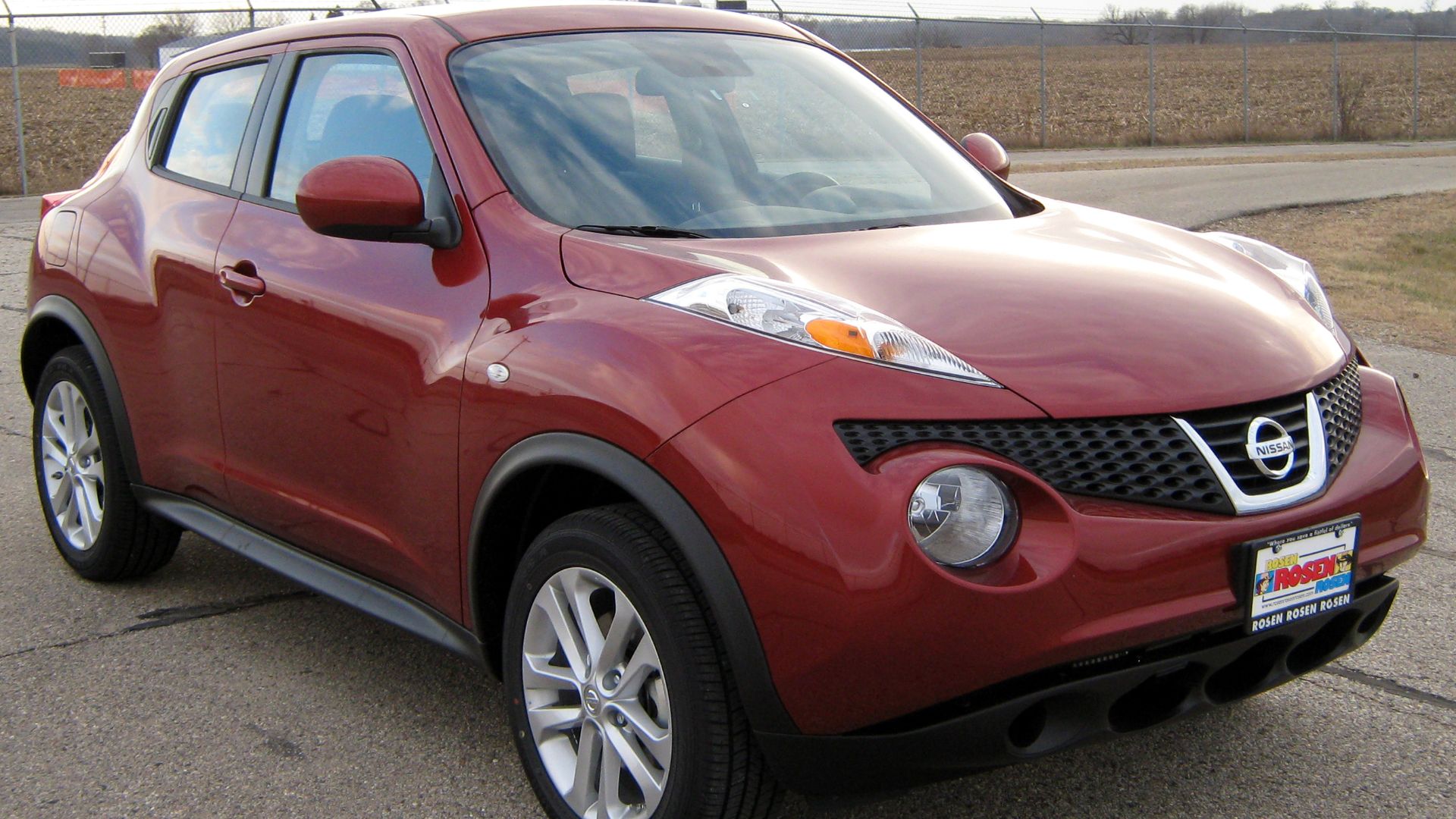 U.S. National Highway Traffic Safety Administration, Wikimedia Commons
U.S. National Highway Traffic Safety Administration, Wikimedia Commons
Saturn Ion (2003–2007)
Entry-level Saturn Ion trims lacked audio buttons entirely, which immediately reduced functionality. The dated textured plastic and oversized horn pad gave the wheel an awkward, blocky appearance. Many test drives described it as uninspiring—a core reason the Ion never offered an engaging driving experience.
Lexus SC430 (2001–2010)
For a car marketed as a grand tourer, the SC430 delivered an oddly dated wheel. Its two-tone plastic and faux wood design aged poorly, both in style and durability. Owners complained about heat retention on sunny days and flaking finishes within a few years.
Daihatsu Materia (2006–2012)
The wheel's polyurethane surface felt rigid and dated, which offered little comfort or style. Despite the Materia's forward-looking design, the steering wheel lacked controls and failed to evolve with the cabin. Its oversized center pad made the wheel feel out of place in an otherwise bold interior.
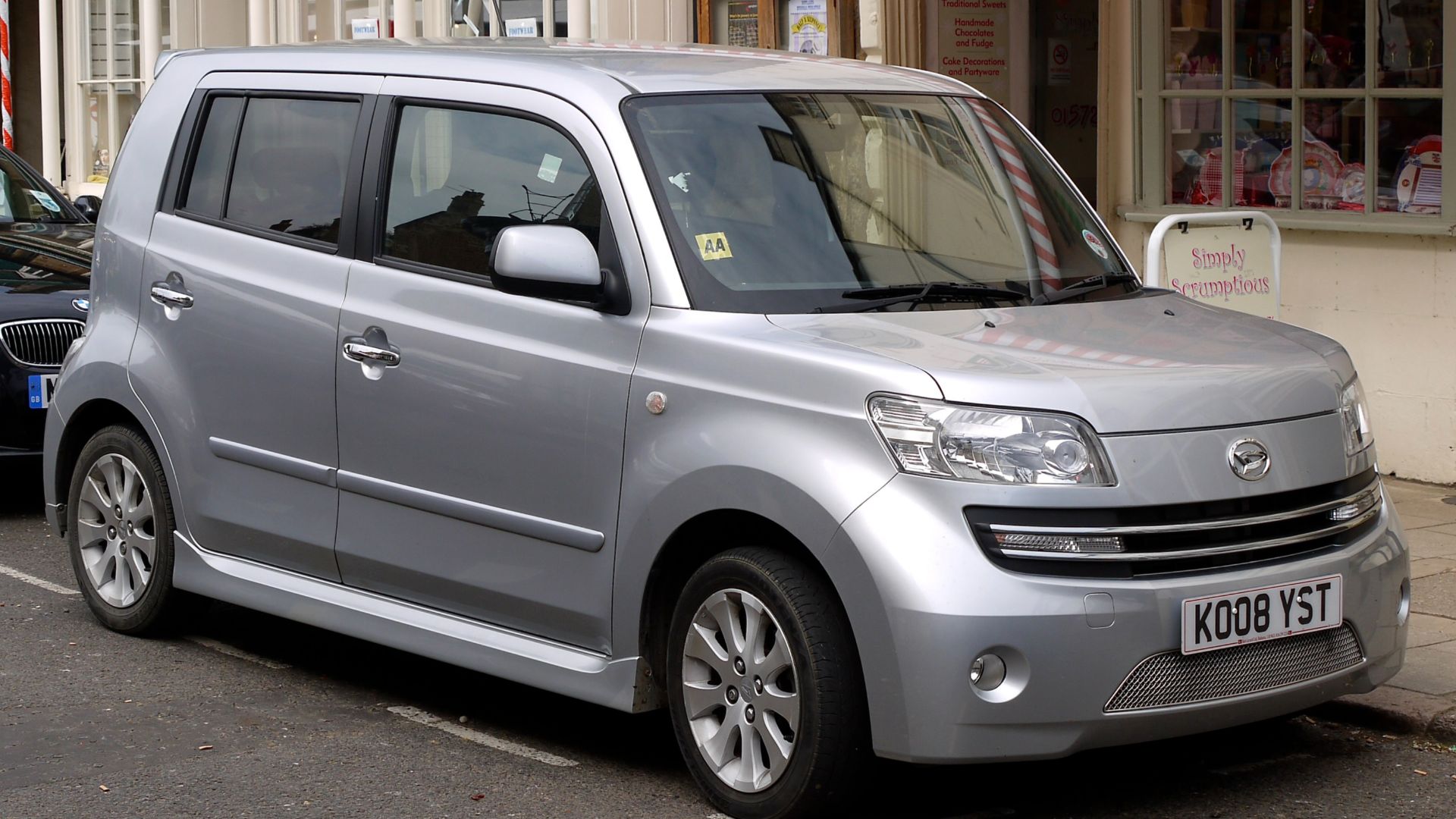 Mick from Northamptonshire, England, Wikimedia Commons
Mick from Northamptonshire, England, Wikimedia Commons
Chevrolet Malibu Maxx (2004–2007)
Large, uncoated buttons wore down quickly, which gave the Malibu Maxx’s wheel a prematurely worn look. Car and Driver called it awkward to handle by noting the clumsy feel behind the wheel. Flat spokes and an oversized airbag module only further diluted the car’s design consistency.
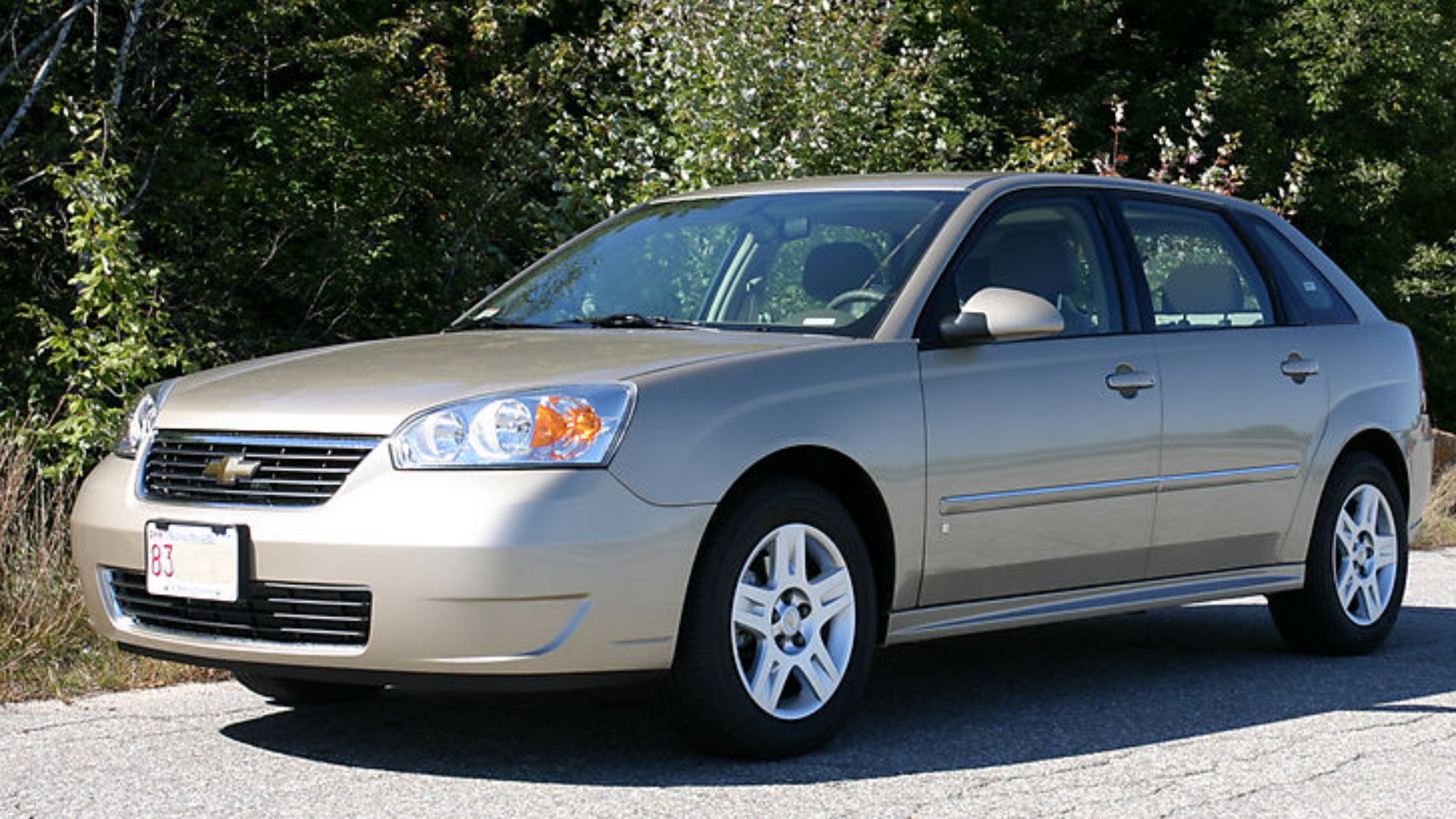 Rene Schwietzke, Wikimedia Commons
Rene Schwietzke, Wikimedia Commons
Renault Avantime (2001–2003)
Shaped with a recessed horn pad and awkward geometry, the Avantime's wheel failed to match the cabin's bold layout. French critics called it a missed design opportunity. Despite merging coupe looks with MPV space, the wheel felt like an afterthought in an otherwise imaginative interior.
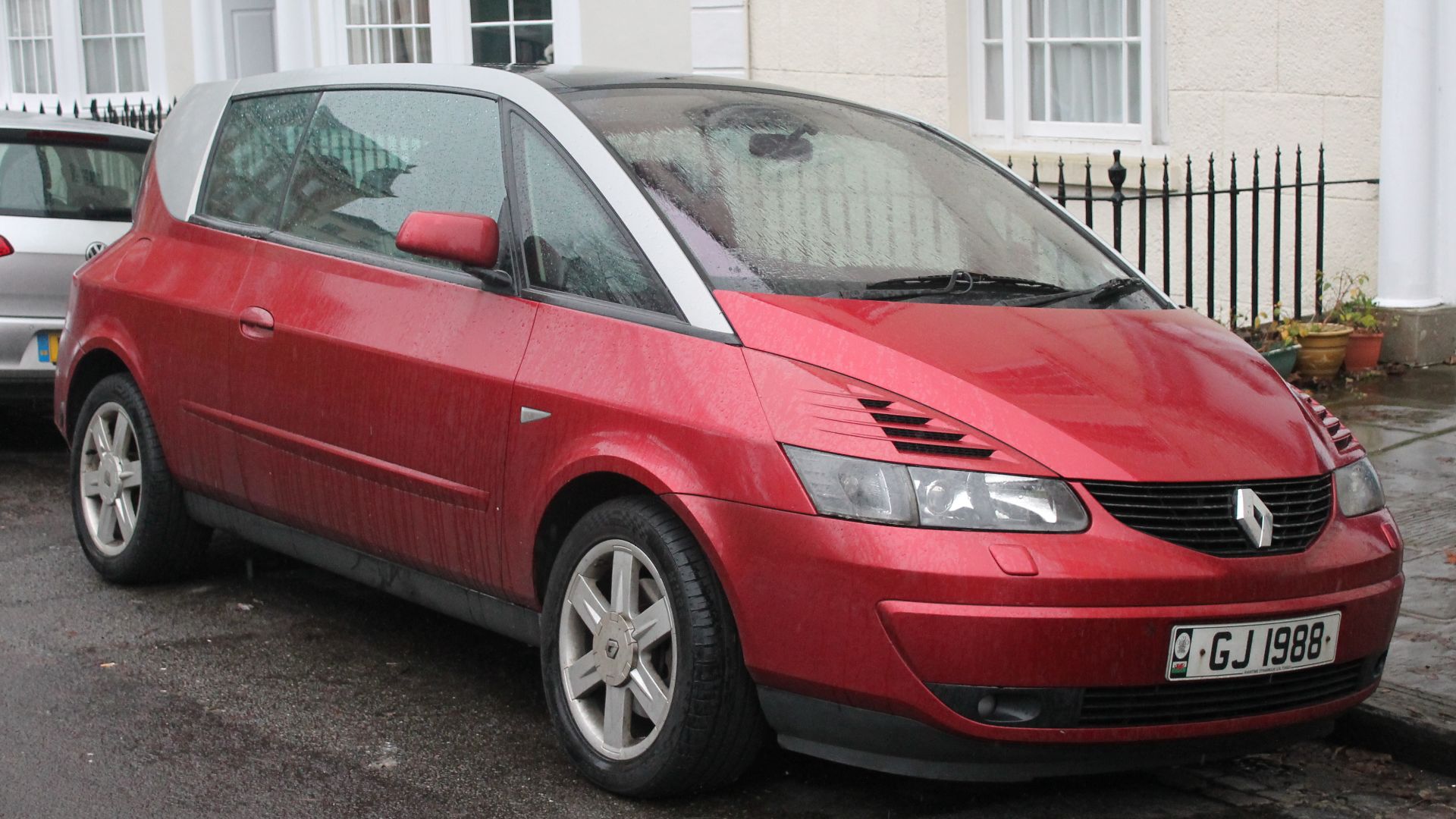 Charlie from United Kingdom, Wikimedia Commons
Charlie from United Kingdom, Wikimedia Commons
Buick Rendezvous (2002–2007)
Aiming for luxury crossover appeal, the Rendezvous delivered a bulky wheel with weak long-term resilience. Surface fading was a common issue, particularly in early models. The hub's high placement often blocked parts of the instrument cluster, and upper-trim leather wraps wore out faster than expected.
Ford Escort (1991–1996)
The Escort carried a steering wheel that belonged to an earlier era. Its hard rubber surface felt hollow, and the two-spoke layout left minimal space for proper grip. As airbags became standard elsewhere, early Escorts went without, which amplified how outdated the wheel already felt.
Mitsubishi Mirage (2014–2024)
What you got was basic. The Mirage's steering wheel had no buttons and a narrow rim that felt uncomfortable during long drives. It lacked telescopic adjustment until 2021. Reviews routinely described it as an object of cost-cutting that failed to evolve over the course of a decade.
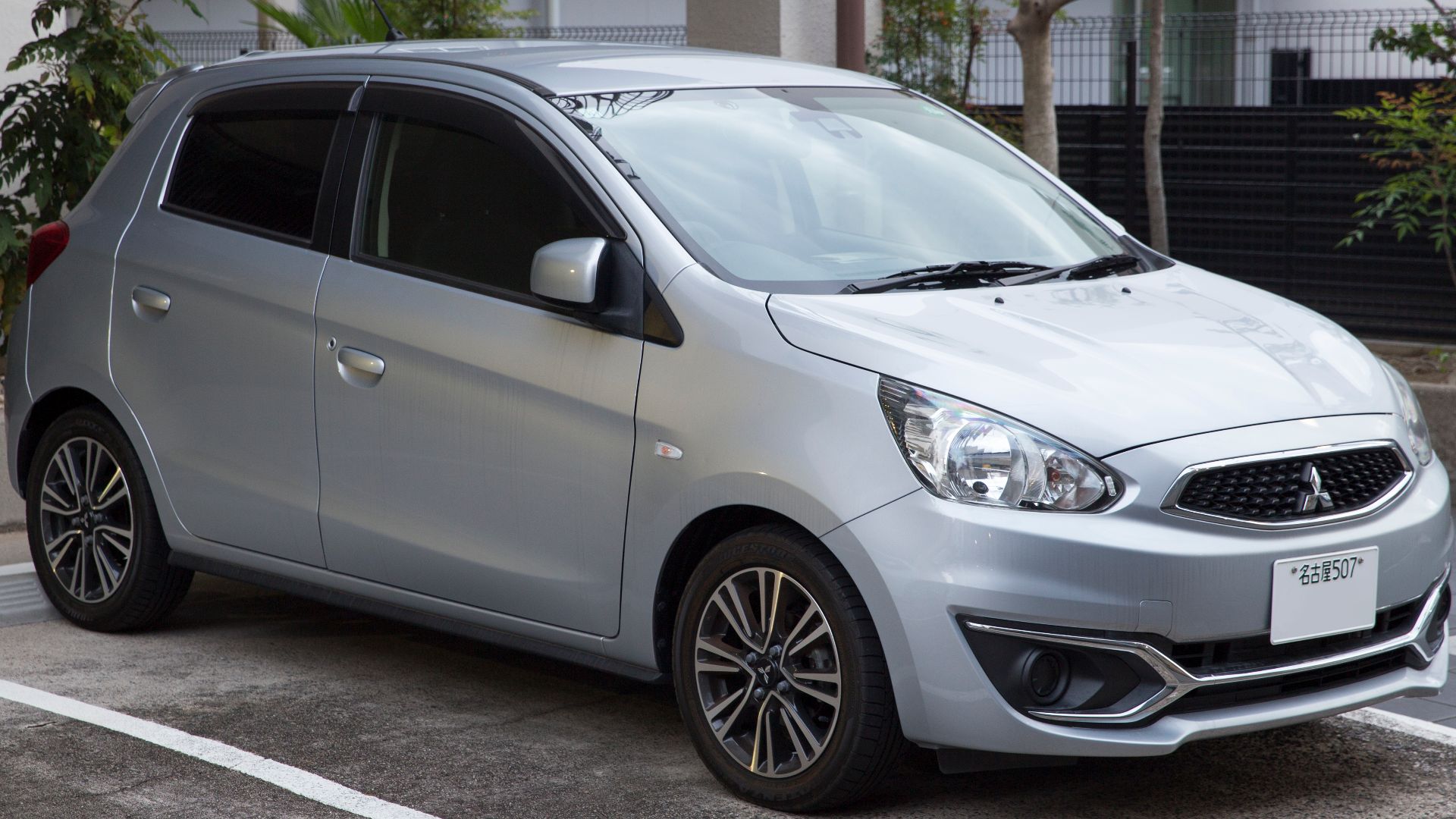 Mr.choppers, Wikimedia Commons
Mr.choppers, Wikimedia Commons
Toyota C-HR (2016–2023)
Stiff buttons and a wide center pad made the first-gen C-HR's wheel difficult to grip comfortably. Though Toyota later updated the layout, owners had long voiced frustration with its awkward ergonomics. A clumsy driver interface stood in contrast to the bold exterior that initially drew attention.
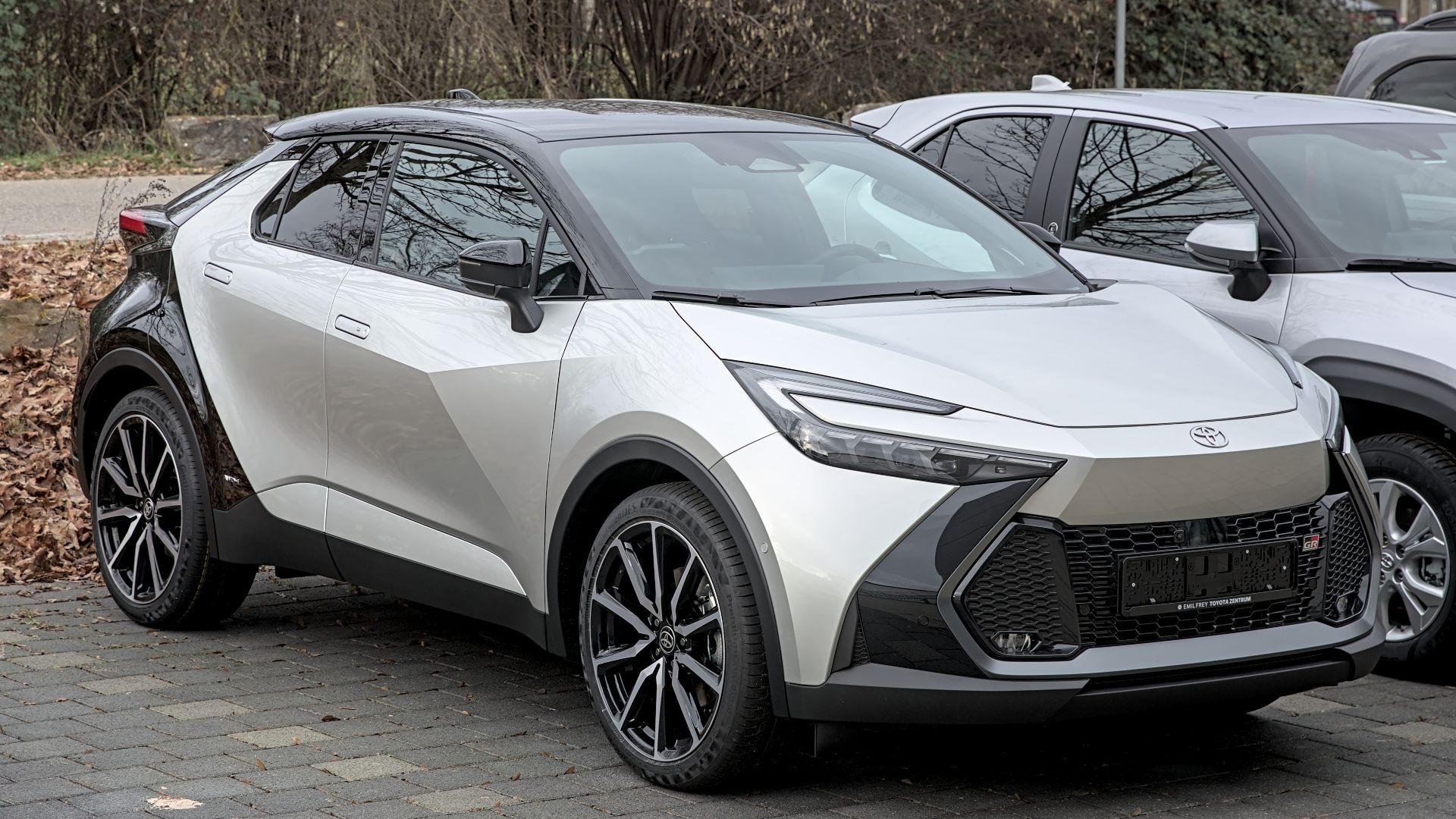 Alexander-93, Wikimedia Commons
Alexander-93, Wikimedia Commons
Porsche 911 (992 Gen)
We've now entered the segment where the design gets it right. The 992-generation Porsche 911 embraces restraint with purpose. Its compact wheel, wrapped in soft leather and shaped by 918 Spyder influence, delivers feedback so precise that reviewers often cite it as the benchmark for driver connection.
 Charles from Port Chester, New York, Wikimedia Commons
Charles from Port Chester, New York, Wikimedia Commons
Audi R8 (Second Gen)
Borrowed from Le Mans racers, the R8's steering wheel is performance in its purest form. Flat-bottomed and compact, it pairs paddle shifters with drive-mode toggles. Crafted from lightweight alloy and leather, it delivers supercar control without the clutter that often overwhelms its rivals.
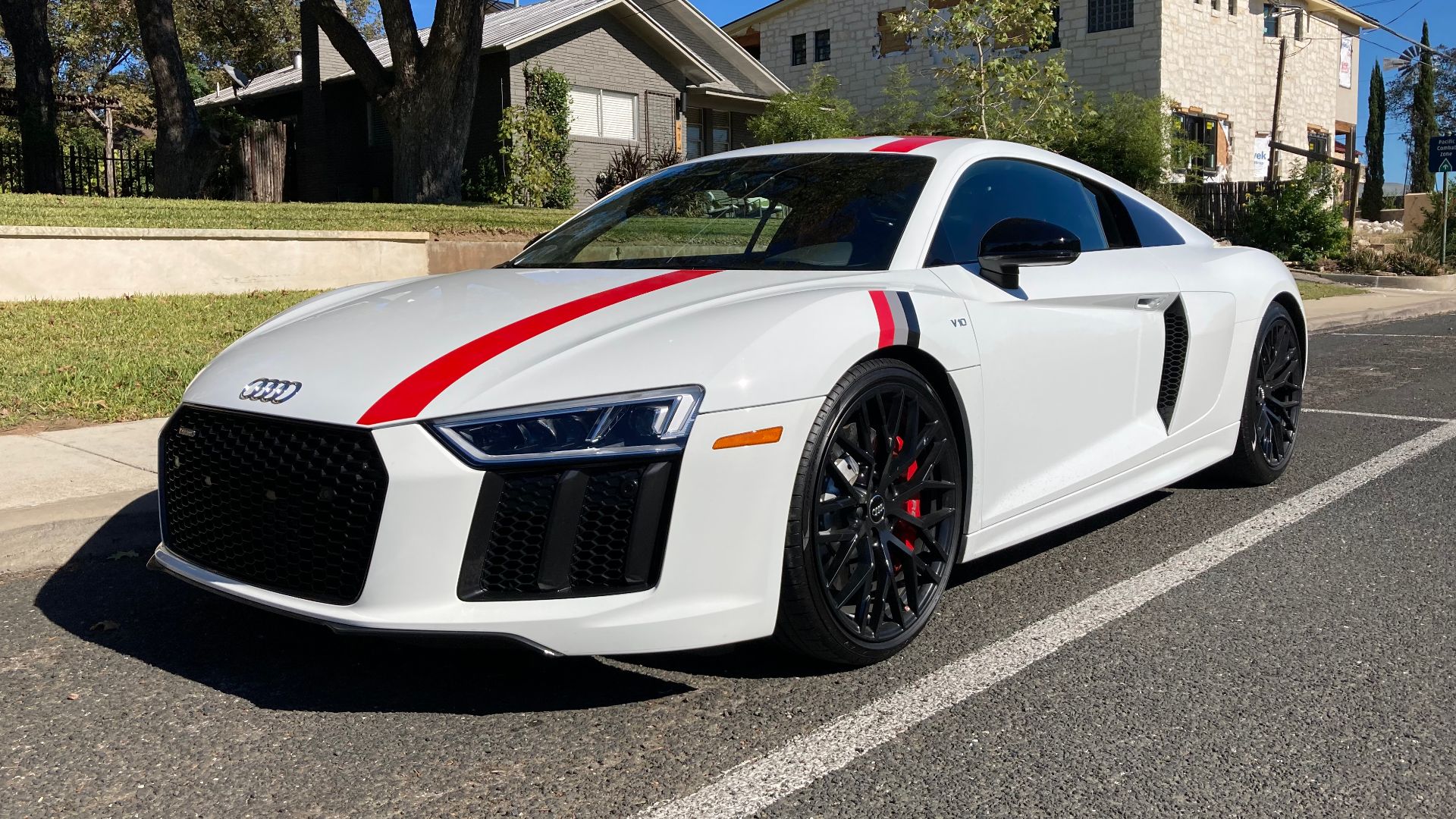 Spheroidite, Wikimedia Commons
Spheroidite, Wikimedia Commons
Mazda MX-5 Miata (ND Gen)
Purity defines the Miata's approach. The ND generation features a compact, three-spoke leather-wrapped wheel engineered for quick transitions. Reviewers highlighted its crisp steering feedback and light resistance. Minimal buttons keep distractions low, letting drivers focus on the road feel and cornering precision.
 Damian B Oh, Wikimedia Commons
Damian B Oh, Wikimedia Commons
Alfa Romeo Giulia Quadrifoglio
Performance is in the details. The Giulia Quadrifoglio's wheel features Alcantara grips, carbon fiber trim, and a Ferrari-style engine start button. Designed with input from Ferrari engineers, it pairs with a fast steering ratio that sharpens response, traits that earned praise from track-day testers and owners alike.
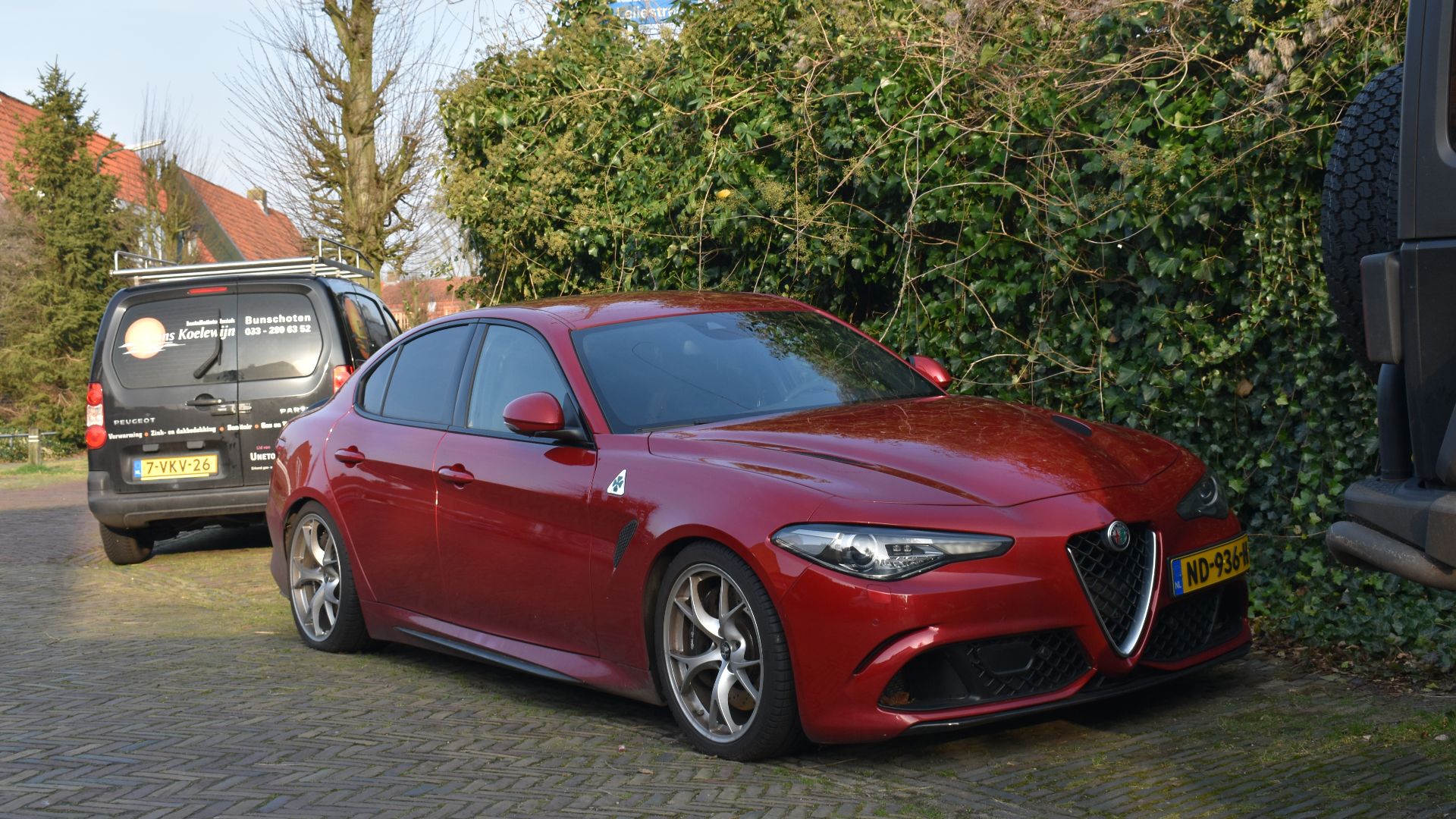 Dennis Elzinga, Wikimedia Commons
Dennis Elzinga, Wikimedia Commons
Tesla Model S Plaid (Yoke Option)
Low-profile by design, the yoke improves forward visibility and reduces visual clutter. Touch controls replace the stalks to simplify the layout. Resistance adjusts only through updates, not conditions. Safety concerns persist, mainly during low-speed turns, where hand-over-hand steering remains the expected driving behavior.
Chevrolet Corvette C8
Reflecting its mid-engine redesign, the C8's steering wheel combines a squared-off, aviation-inspired shape with stitched leather for a confident grip. It is compact and includes paddle shifters and drive mode toggles, which enhance handling response and complete GM's bold, performance-centered redesign.
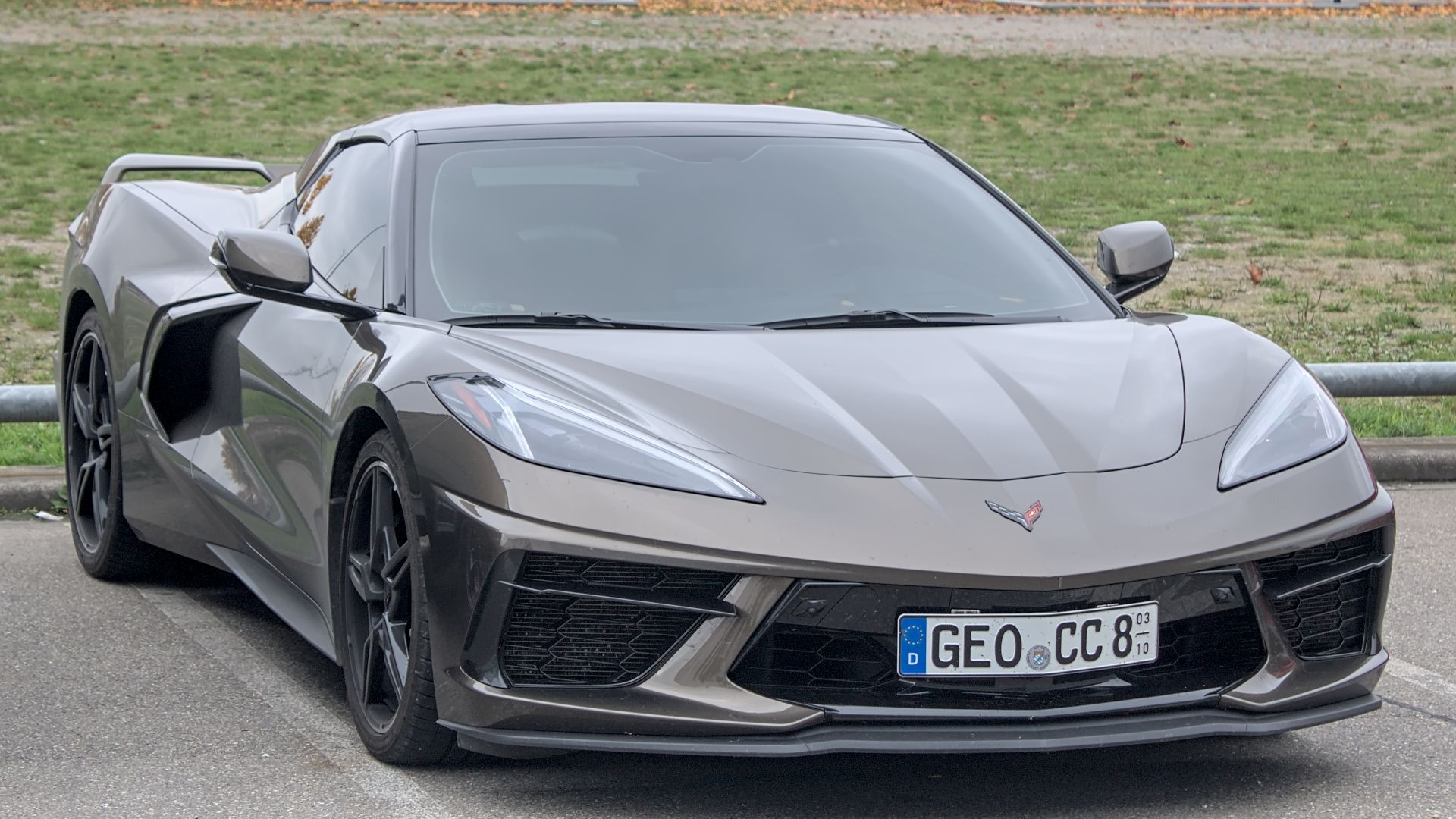 Alexander-93, Wikimedia Commons
Alexander-93, Wikimedia Commons
Genesis G80 Sport (2022+)
Genesis found elegance in contrast by pairing a flat-bottom wheel with perforated leather and red stitching for subtle flair. Its clean layout and material quality drew praise from reviewers, as the design strikes a balance between sport-focused cues and a strong sense of executive refinement.
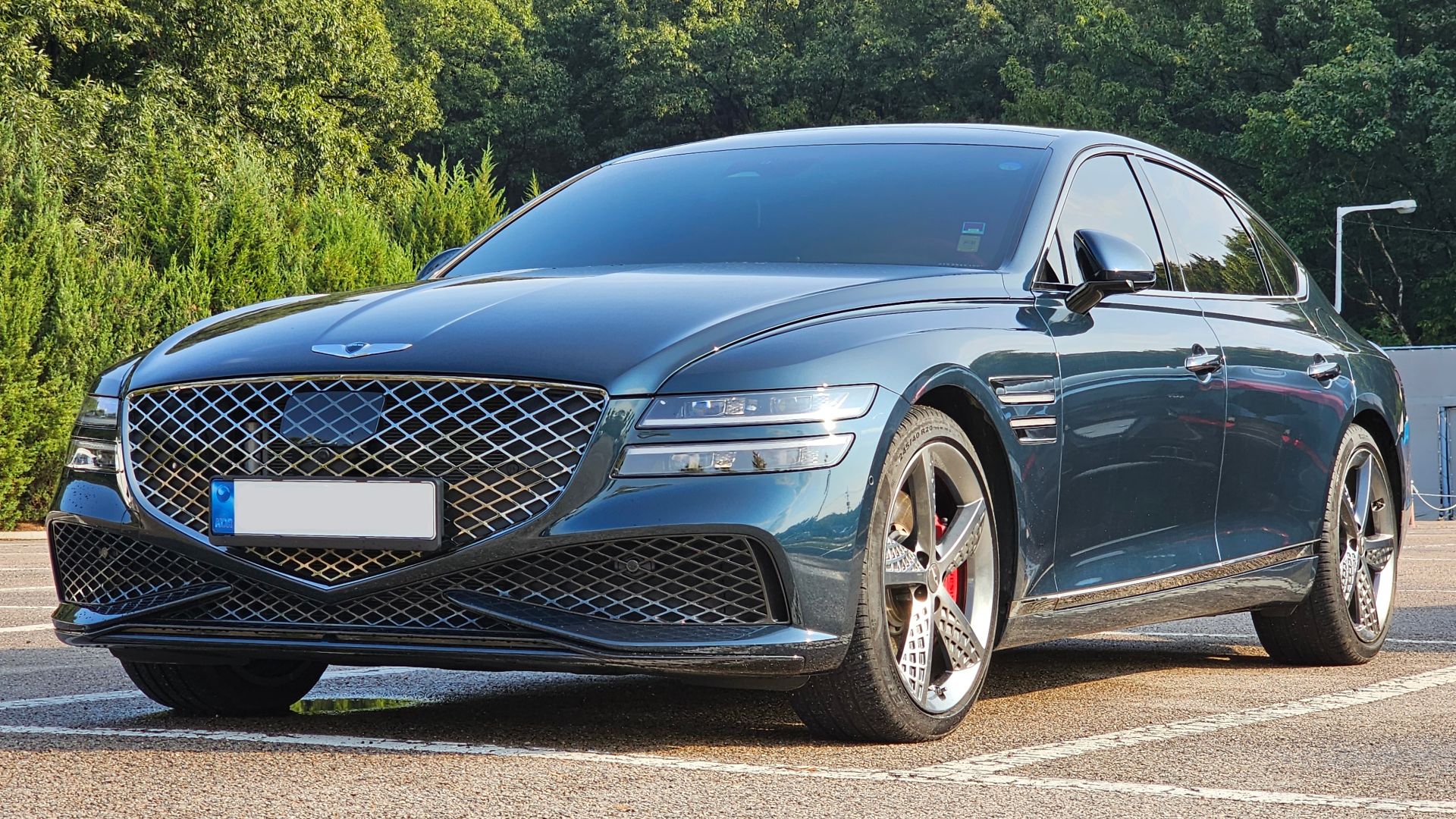 Damian B Oh, Wikimedia Commons
Damian B Oh, Wikimedia Commons
Mercedes-Benz S-Class (W223)
Luxury tech finds its centerpiece in the W223 S-Class steering wheel. Capacitive touchpads blend with sculpted leather to manage infotainment and semi-autonomous driving. Mercedes calibrated it to work with its eye-tracking safety systems, which makes it both an interface and an active monitoring tool.
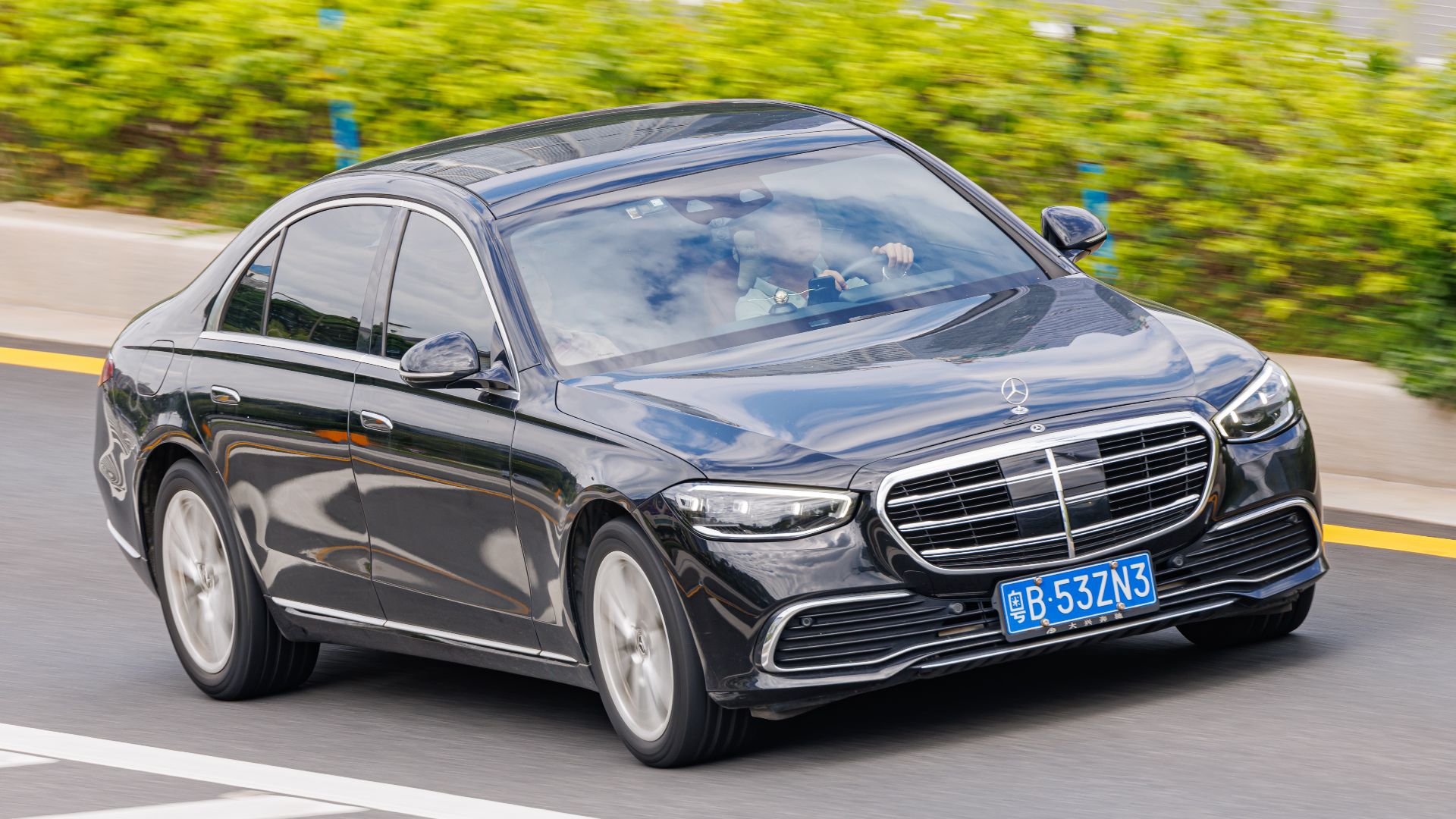 Dinkun Chen, Wikimedia Commons
Dinkun Chen, Wikimedia Commons
Lamborghini Huracan STO
Some wheels speak louder by saying less. The Huracan STO ditches buttons entirely in favor of racing purity. Its flat-top and flat-bottom shape improves clearance for helmets and knees. Built for GT3-style track engagement, the Alcantara wrap ensures reliable grip at every apex.
Ford GT (Second Gen, 2017–2022)
Mirroring Le Mans endurance racers, the second-generation Ford GT's steering wheel includes shift lights and fixed paddles for constant control. Removing traditional stalks and reducing rotation angle allows drivers to maintain complete focus when responding to rapid inputs at high speed.
Aston Martin DB11
Elegance meets control in the DB11's understated wheel. Featuring hand-finished leather and subtle thumb pads, it strikes a balance between classic grand touring cues and modern comfort. Critics often note how its delicate layout echoes the car's dual nature: a refined cruiser with the heart of 528 horsepower.
Rivian R1T
Purpose-built for a next-gen truck, the R1T's steering wheel integrates haptic feedback with adaptive controls and a central scroll input. Wrapped in weather-resistant matte leather, it connects to Rivian’s terrain software, which enables seamless transitions between daily commuting and rugged off-road navigation without physical changes.
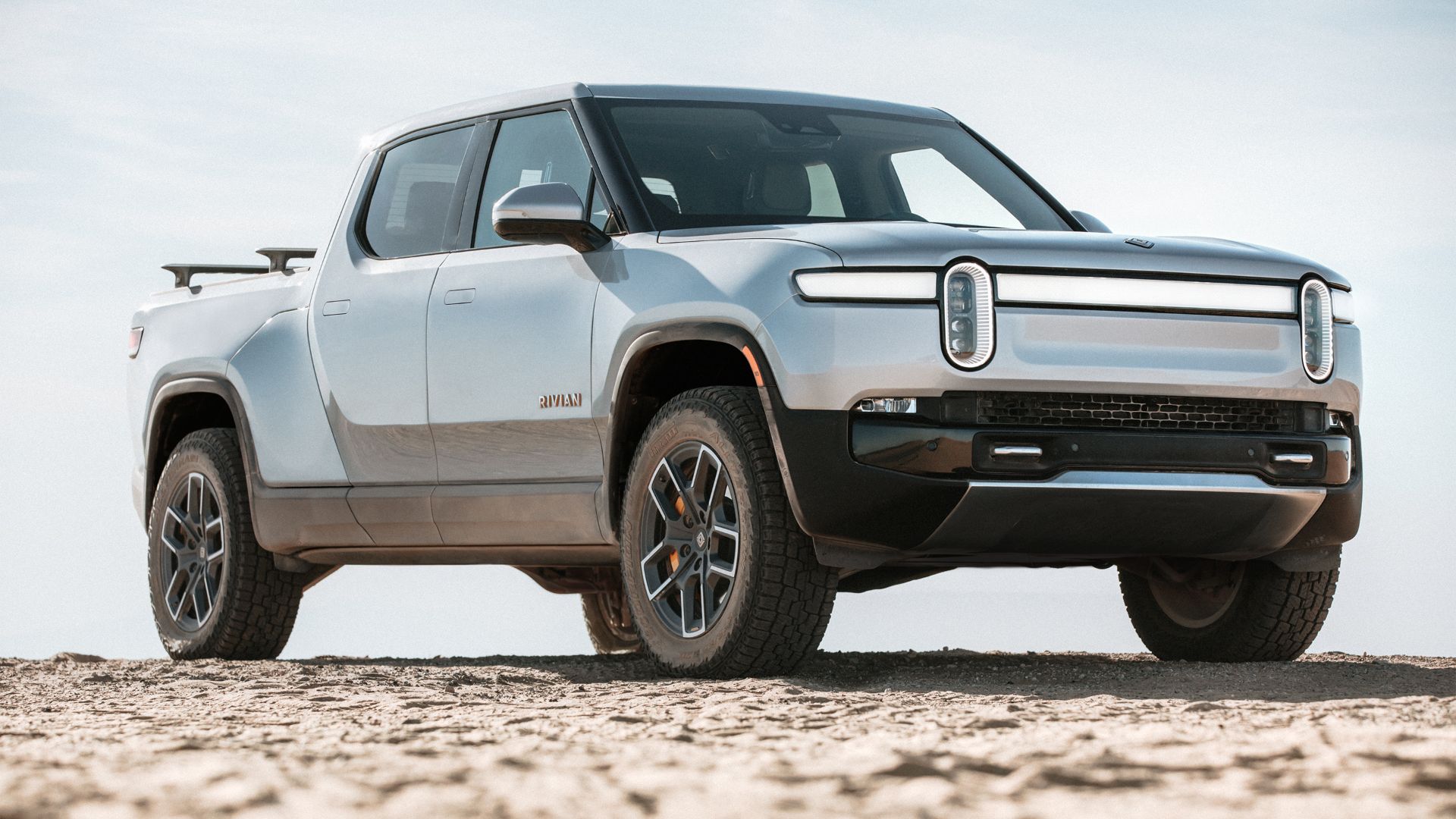 Photo by Rivian, Wikimedia Commons
Photo by Rivian, Wikimedia Commons


